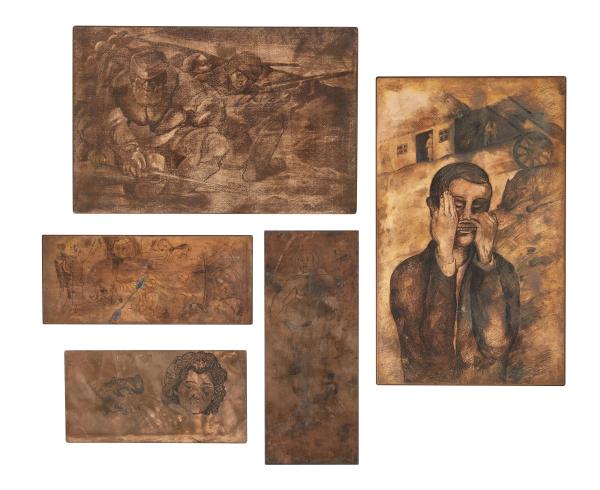Naum Slutzky, a visionary Bauhaus designer, left an indelible mark on the world of industrial design. Born in Russia, Slutzky's work embodied the spirit of the age, embracing the possibilities of machine technology and challenging the conventions of traditional craftsmanship. His creations stood as a testament to the Bauhaus philosophy, where process and function took precedence over the intrinsic value of materials. In a time of economic turmoil and rising inflation in Germany, Slutzky rejected precious metals and embraced base metals, reflecting the changing times.
Slutzky's journey into design began with a dual passion for engineering and fine art, evident in his distinctive creations. He initially honed his skills as a goldsmith at the renowned Wiener Werkstätte between 1912 and 1913. Subsequently, he pursued engineering studies from 1914 to 1919 at the Technical High School, complemented by formal artistic training at the Viennese Art School.
In December 1919, Slutzky received a transformative opportunity when Walter Gropius invited him to join the metal and goldsmithing workshops at the Weimar Bauhaus. Collaborating with luminaries such as Christian Dell and Laslo Moholy-Nagy, Slutzky played a significant role in shaping the Bauhaus movement. In 1922, he was entrusted with leading the metalwork workshop at the Bauhaus School, eventually becoming a master goldsmith. During this period, his innovative work garnered recognition, and he started making appearances in prominent exhibitions.
Between 1927 and 1933, Slutzky embarked on a fruitful phase as an interior designer, lighting consultant, and goldsmith for Hamburg-based retailer Kaufmann. Notably, his designs were showcased in the Neue Secession exhibition at the Hamburg Kunsthalle in April 1930. He also exhibited his creations at the Deutsche Werkbund exhibition, held at the Societé des Artistes Décorateurs in Paris.
In 1933, Slutzky was compelled to flee Germany due to political circumstances and found refuge in Britain. Despite the challenges, he continued to flourish and build a successful career. He became a respected educator, imparting his knowledge and expertise in prestigious institutions. From 1946 to 1950, he served as a tutor in jewellery design at the Central School of Arts and Crafts in London. Subsequently, he held the position of lecturer in Product Design at the Royal College of Art from 1950 to 1957. In the final years of his career, Slutzky held the role of Senior Lecturer in Product Design at the Birmingham School of Arts and Crafts (1957-1964) and later became a Professor of Industrial Design at Ravensbourne College of Art in Bromley (1965).
Throughout his illustrious career, Slutzky was recognized as one of the most original jewellers associated with the Bauhaus movement. His designs exuded a timeless appeal, characterized by simple geometric elegance and a minimalistic approach. Engineering played a subtle yet vital role in his creations, resulting in harmonious designs that transcended traditional boundaries. Naum Slutzky's exceptional contributions to the field of industrial design and jewellery remain influential to this day.
On November 4, 1965, Naum Slutzky passed away, leaving behind a legacy of innovation and creativity that continues to inspire designers and enthusiasts alike.
